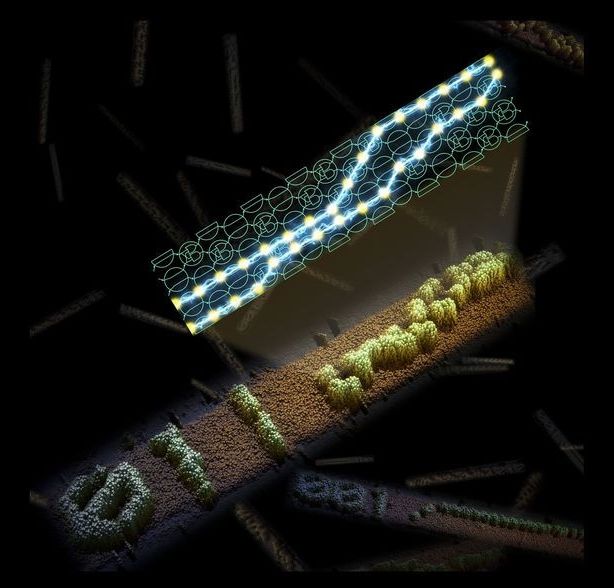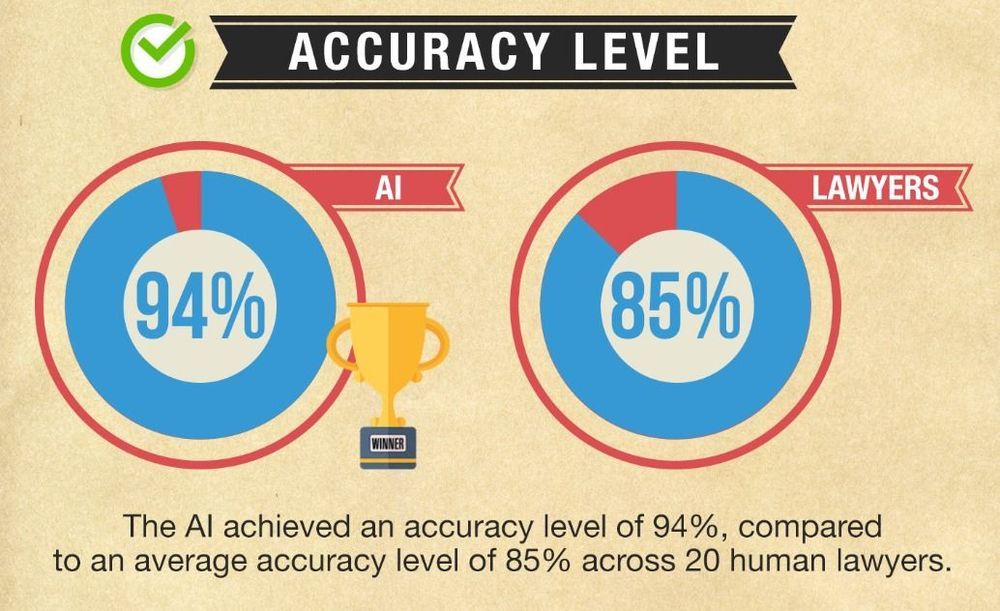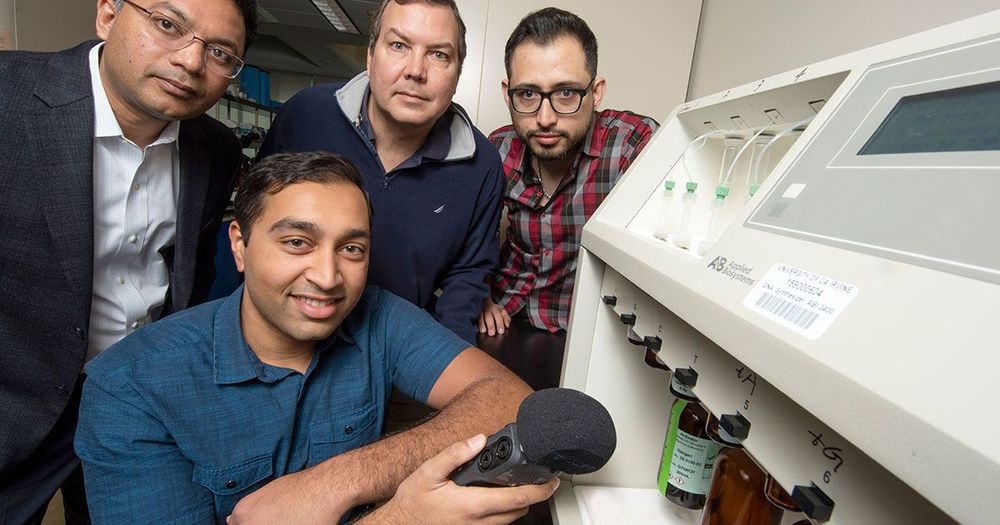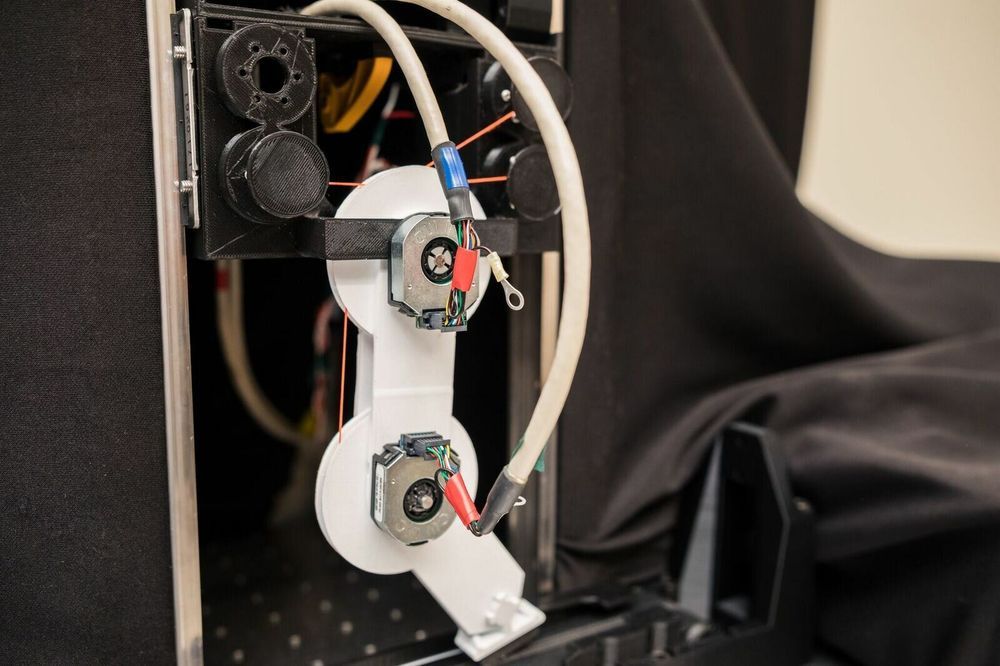DNA computers have to date only been able to run one algorithm, but a new design shows how these machines can be made more flexible—and useful.



Computer scientists at the University of California, Davis, and the California Institute of Technology have created DNA molecules that can self-assemble into patterns essentially by running their own program. The work is published March 21 in the journal Nature.
“The ultimate goal is to use computation to grow structures and enable more sophisticated molecular engineering,” said David Doty, assistant professor of computer science at UC Davis and co-first author on the paper.
The system is analogous to a computer, but instead of using transistors and diodes, it uses molecules to represent a six-bit binary number (for example, 011001). The team developed a variety of algorithms that can be computed by the molecules.

A team of researchers at the Rochester Institute of Technology invented a “toilet seat-based cardiovascular monitoring system” that could help hospitals monitor patients for risk of congestive heart failure — a toilet, in other words, that detects whether your heart is about to give out.
“This system will be uniquely positioned to capture trend data in the home that has been previously unattainable,” reads the paper, published in the journal JMIR Mhealth Uhealth.
Integrated into the seat is a device that measures heart rate, blood pressure, and blood oxygenation levels. Algorithms will take in all that data and notify health practitioners if the patient’s condition deteriorates.

Imagine a future where electronic text messaging is tracked by an intelligent algorithm that can identify truth from lies. A new study from two US researchers suggests this kind of online polygraph is entirely possible, with early experiments showing a machine learning algorithm can separate truth from lies based just on text cues over 85 percent of the time.

It was 100 times faster on a routine task.
In a recent study, LawGeex, a legal tech startup, challenged a group of 20 experienced lawyers to test their skills and knowledge against its AI-powered algorithm.
A legal battle
The group included associates and inhouse lawyers from global firms such as Goldman Sachs, Cisco and Alston & Bird, as well as general counsel and sole practitioners.

The latest Facebook hack should have shown everyone nothing is safe. Researchers have now shown how easy it is to steal data from people doing research.
Engineers at the University of California say they have demonstrated how easy it would be to snoop on biotech companies making synthetic DNAll you need is an audio recording, they say. Place a smartphone near a DNA synthesizer, record the sound, run the recording across algorithms trained to discern the clicks and buzzes that particular machine makes, and you’ll know exactly what combination of DNA building blocks it is generating.
Researchers devise method for snooping on DNA synthesis using acoustic recordings. But is it a real threat?


For a newborn giraffe or wildebeest, being born can be a perilous introduction to the world—predators lie in wait for an opportunity to make a meal of the herd’s weakest member. This is why many species have evolved ways for their juveniles to find their footing within minutes of birth.
It’s an astonishing evolutionary feat that has long inspired biologists and roboticists—and now a team of USC researchers at the USC Viterbi School of Engineering believe they have become the first to create an AI-controlled robotic limb driven by animal-like tendons that can even be tripped up and then recover within the time of the next footfall, a task for which the robot was never explicitly programmed to do.
Francisco J. Valero-Cuevas, a professor of Biomedical Engineering a professor of Biokinesiology & Physical Therapy at USC in a project with USC Viterbi School of Engineering doctoral student Ali Marjaninejad and two other doctoral students—Dario Urbina-Melendez and Brian Cohn, have developed a bio-inspired algorithm that can learn a new walking task by itself after only 5 minutes of unstructured play, and then adapt to other tasks without any additional programming.
James Hughes : “Great convo with Yuval Harari, touching on algorithmic governance, the perils of being a big thinker when democracy is under attack, the need for transnational governance, the threats of automation to the developing world, the practical details of UBI, and a lot more.”
In this episode of the Waking Up podcast, Sam Harris speaks with Yuval Noah Harari about his new book 21 Lessons for the 21st Century. They discuss the importance of meditation for his intellectual life, the primacy of stories, the need to revise our fundamental assumptions about human civilization, the threats to liberal democracy, a world without work, universal basic income, the virtues of nationalism, the implications of AI and automation, and other topics.
Yuval Noah Harari has a PhD in History from the University of Oxford and lectures at the Hebrew University of Jerusalem, specializing in world history. His books have been translated into 50+ languages, with 12+ million copies sold worldwide. Sapiens: A Brief History of Humankind looked deep into our past, Homo Deus: A Brief History of Tomorrow considered far-future scenarios, and 21 Lessons for the 21st Century focuses on the biggest questions of the present moment.
Twitter: @harari_yuval
Want to support the Waking Up podcast?
Please visit: http://www.samharris.org/support
Get Sam’s email newsletter: https://www.samharris.org/email_signup
Artificial intelligence and its subset of disciplines—such as machine learning, natural language processing, and computer vision —are seemingly becoming integrated into our daily lives whether we like it or not. What was once sci-fi is now ubiquitous research and development in company and university labs around the world.
Similarly, the startups working on many of these AI technologies have seen their proverbial stock rise. More than 30 of these companies are now valued at over a billion dollars, according to data research firm CB Insights, which itself employs algorithms to provide insights into the tech business world.
Private companies with a billion-dollar valuation were so uncommon not that long ago that they were dubbed unicorns. Now there are 325 of these once-rare creatures, with a combined valuation north of a trillion dollars, as CB Insights maintains a running count of this exclusive Unicorn Club.
The subset of AI startups accounts for about 10 percent of the total membership, growing rapidly in just 4 years from 0 to 32. Last year, an unprecedented 17 AI startups broke the billion-dollar barrier, with 2018 also a record year for venture capital into private US AI companies at $9.3 billion, CB Insights reported.
